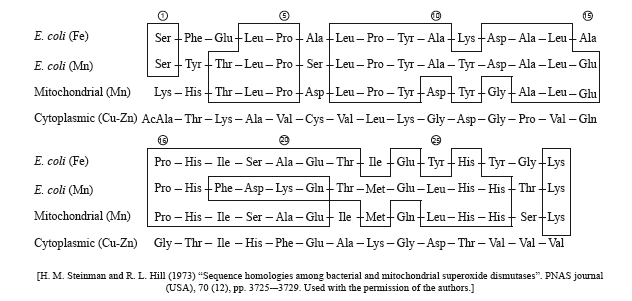IBDP Online Test Series By iitianacademy
Comprehensive Test Preparatory package targeted towards IBDP
Question
The spontaneous origin of life on Earth is thought to have involved the non-living synthesis of simple organic molecules.
List two other processes needed for the spontaneous origin of life.
Outline the role of prokaryotes in the development of an oxygen-rich atmosphere on the Earth.
Answer/Explanation
Markscheme
simple molecules must polymerize/assemble into polymers;
origin of self-replicating molecules / formation of self-replicating molecules;
simple molecules must become isolated from the surroundings/enclosed in membranes;
early atmosphere was oxygen free;
some prokaryotes could carry out chemosynthesis;
cyanobacteria (and other varieties) developed the ability to photosynthesize;
used water as hydrogen source so released oxygen;
oxygen began to accumulate in the atmosphere;
more photosynthesis than respiration;
Examiners report
This was well answered by some candidates, but often answers referred to organisms rather than molecules.
This was either well answered or poorly done, with the weaker candidates thinking that oxygen came from carbon dioxide rather than water. Few gave the idea of more photosynthesis than respiration helping to build up the amount of oxygen in the atmosphere.
Question
The spontaneous origin of life on Earth is thought to have involved the non-living synthesis of simple organic molecules.
List two other processes needed for the spontaneous origin of life.
Outline the role of prokaryotes in the development of an oxygen-rich atmosphere on the Earth.
Answer/Explanation
Markscheme
simple molecules must polymerize/assemble into polymers;
origin of self-replicating molecules / formation of self-replicating molecules;
simple molecules must become isolated from the surroundings/enclosed in membranes;
early atmosphere was oxygen free;
some prokaryotes could carry out chemosynthesis;
cyanobacteria (and other varieties) developed the ability to photosynthesize;
used water as hydrogen source so released oxygen;
oxygen began to accumulate in the atmosphere;
more photosynthesis than respiration;
Examiners report
This was well answered by some candidates, but often answers referred to organisms rather than molecules.
This was either well answered or poorly done, with the weaker candidates thinking that oxygen came from carbon dioxide rather than water. Few gave the idea of more photosynthesis than respiration helping to build up the amount of oxygen in the atmosphere.
Question
Outline the contribution of prokaryotes to the creation of an oxygen-rich atmosphere.
Answer/Explanation
Markscheme
(prokaryotes) used hydrogen from water in synthesis and released oxygen;
(prokaryotes) produced oxygen during photosynthesis;
atmosphere changed from a reducing atmosphere to an oxidizing atmosphere;
current life forms depend upon an oxygen-rich atmosphere;
Examiners report
D2 (b) presented a problem for many candidates who could not outline the contribution of prokaryotes to an oxygen rich atmosphere.
Question
Superoxide dismutase is an enzyme used by cells to protect themselves against oxidative damage. These enzymes can have different metals as part of their structure.
A study to compare two dismutases from Escherichia coli bacteria and two dismutases from eukaryotic cells was undertaken. The following enzymes were used:
- E. coli dismutase with iron (Fe)
- E. coli dismutase with manganese (Mn)
- eukaryotic mitochondrial dismutase with manganese (Mn)
- eukaryotic cytoplasmic dismutase with copper-zinc (Cu-Zn).
The following shows part of the amino acid sequences of these enzymes. Boxes enclose identical amino acids in the sequence of the two E. coli and mitochondrial dismutases.

State how many amino acids are in the same position in the E. coli (Fe), E. coli (Mn) and the mitochondrial dismutase sequences shown.
State the amino acids which are present in the same position in at least one bacterial dismutase and in both eukaryotic dismutases.
Compare the E. coli (Mn) and the mitochondrial dismutases.
The sequences of the two bacterial dismutases and the mitochondrial dismutase show a high degree of homology. Discuss how this supports the endosymbiotic theory for the origin of mitochondria.
Answer/Explanation
Markscheme
11
Ile and Glu (need both to award the mark)
a. share 17 (out of 29) amino acids in common / more amino acids similar than different;
b. both have Mn in the enzyme (as cofactor);
c. greatest difference between them is from amino acid 18 to 22;
d. mitochondrial has Gly (position 12) while E. coli (Mn) never has Gly;
e. Leu is most common amino acid in both appearing four times / other valid comparison;
a. endosymbiotic theory states bacteria were engulfed by organisms to become mitochondria;
b. sequence comparison between mitochondrial and bacterial dismutase supports this hypothesis;
c. more similarity in the amino acid sequence between mitochondrial and bacterial dismutase than between mitochondrial and cytoplasmic dismutase;
Examiners report
Almost all indicated correctly that 11 amino acids were in the same position in the three dismutase sequences.
Most were able to correctly identify Ile and Glu as present in the same position.
Most were able to get two correct comparisons. Some carelessly indicated that the common element was magnesium rather than manganese despite the fact this was stated in the stem.
Most candidates received 2 marks for this section. Good descriptions of the endosymbiotic theory were often given.
Question
Outline two pieces of evidence that support the endosymbiotic theory for the origin of eukaryotes.
Answer/Explanation
Markscheme
smaller/70S ribosomes in mitochondria/chloroplasts (as in prokaryotes);
circular DNA in mitochondria/chloroplasts (as in prokaryotes);
mitochondria/chloroplasts have double membrane;
similar size/shape of mitochondria/chloroplasts to prokaryotes;
Examiners report
Some very good answers, but, most often, candidates only explained the endosymbiotic theory, without outlining the pieces of evidence for it.
